Improving Support for LGBT+ Young People in Schools and Colleges
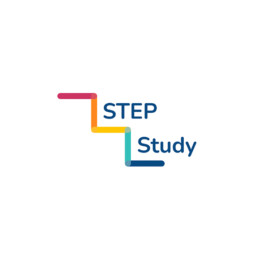
Written by STEP Study
The Schools Training to Enhance support for LGBT+ young People (STEP) study, funded by the TRIUMPH network, is being co-led by a research team at the ESRC Centre for Society and Mental Health, young people, and the Mosaic LGBT+ Young Persons Trust.
For many LGBT+ young people, school can be a place of growth—a “home away from home”—or an environment just as bad as the alternatives.
Bullying and peer victimisation experiences such as violence, anti-LGBT+ language, exclusion, and pressures to conform are all more common for LGBT+ students. These experiences adversely affect mental health and well-being, such as a sense of belonging, feelings of physical and psychological safety, and access to support. These things contribute to higher levels of problems such as depression, poor body image, self-harm, substance misuse as well as suicidal thoughts and behaviours among young people who identify as LGBT+.
Teachers and other staff who create more accepting environments can break this cycle. To support LGBT+ students, it is important that they understand LGBT+ issues and how being LGBT+ might affect students; and stand up for them and actively challenge bullying and discrimination, to create more accepting environments and help prevent mental health issues.
The Schools Training to Enhance support for LGBT+ young People (STEP) study, funded by the TRIUMPH network, is being co-led by a research team at the ESRC Centre for Society and Mental Health, young people, and the Mosaic LGBT+ Young Persons Trust. We are working together to:
- Identify what training is already available to school/college staff
- Understand what makes it easier or more difficult for schools to access training, and to find ways to support uptake for different schools/colleges.
- Improve training for secondary schools/colleges to better support LGBT+ pupils, focusing on what young people and staff think is important for school/college staff to know.
We want to ensure that our work is intersectional. We are learning more about how schools and colleges can better support the well-being of all young LGBT+ people. This includes minoritised racial and ethnic groups and faith communities, young people from low-income families, as well as young people living in rural and coastal areas.
So far, we have conducted interviews and focus groups with training providers in the UK to learn more about what their training covers, how it’s developed and links to student mental health. Through these conversations, we have started to identify barriers that schools face in taking up and implementing training to support LGBTQ+ students.
Next, young researchers will lead group discussions with pupils (aged 13-19 years) and school staff to identify what they think is important for school staff to know.
We will then hold two creative workshops, both co-led by young researchers and including:
- Students aged 13-19 years: to identify and design potential improvements to existing training.
- School/college staff and people who run teacher training courses: to design ways to increase training uptake by schools.
We will use our findings to recommend changes to schools training, and to plan a larger research project to test out these improvements in terms of their impact on young people’s mental health.
Get involved in the STEP study
We are currently recruiting i) young people (aged 13-19), ii) school staff and iii) providers of training to schools on LGBT+ issues to take part in an interview or focus group, and/or a creative workshop co-led by young researchers. Please get in touch if you would like to get involved and feel free to share with anyone who may be interested.
We would particularly like to hear from you if any of the following apply:
- You identify as LGBT+
- You identify as Black African, Black Caribbean, Asian, Latin American, Middle Eastern, from a mixed or any other racial or ethnic background
- You are a person of faith
- You live in a rural or coastal area
Why is the STEP study important to young people?
Juliet, student and young adult researcher in the STEP study coproduction team
“I think this project is really important to young LGBTQ+ people, because when we get together as a community, we see that there are huge school to school and regional differences, in how topics like relationships and sex education are addressed. And that this also influences young people’s obviously mental health and coming out journeys, or many of them struggling with their sexuality. A good school versus a bad school, can mean the difference between getting into a good university versus, and having a good job, versus not being very successful in life.”
Further information
To get involved in the project or for more information visit: http://www.stepstudy.co.uk/
You can also e-mail: steps@kcl.ac.uk
Follow us on Twitter: https://twitter.com/TheStepStudy or Instagram: https://www.instagram.com/thestepstudy/
Engaging and Empowering Students in DEI Work
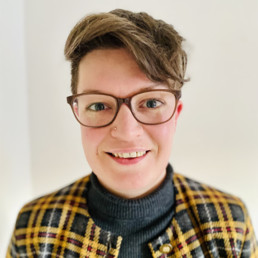
Written by Lois Nethersell-Webb
Lois is a History teacher and DEI Lead at a rural Norfolk High School. In this role she is leading whole school training on diversifying the curriculum. Lois is also a founder of the Norfolk DEI Network and is passionate about encouraging and guiding young people to become change makers.
What kind of adults do we want our students to become? Do we want them to passively accept the status quo or do we want them to become active citizens who question the world around them? If the latter, then we must model and shape this behaviour in schools by providing them with opportunities to express their views and lead on causes that ignite their passions.
Students need to see that becoming involved in DEI work within schools or, indeed, wider society, is a sign of strength. When the government views standing up for marginalised groups as ‘woke’ we are fighting a populist narrative. Educators need to demonstrate to students that standing up to a friend who uses racist or homophobic slurs is not woke, it is strength. Educators need to demonstrate to students that calling out your mate who has made sexualised comments to a female student is not woke, it is strength. Educators need to demonstrate to students that refusing to mimic the accent of a new teacher is not woke, it is strength.
One way that schools can demonstrate active citizenship to the pupils in their charge is through setting up intersectional diversity groups. Whilst student groups focused on one particular protected characteristic, such as Pride Club, have their place, an intersectional group enables students with different protected characteristics, and their allies, to come together and support each other. We must create safe spaces for students to discuss concerns and lived experiences before supporting them to curate ways in which to spread their narratives across the whole student body.
Our student Diversity, Inclusion, Campaigns and Equality (DICE) group have been instrumental in raising awareness of a number of societal issues. Whether it be a cube of truth focused on male mental health or the lunchtime climate change protest, our students have thought of innovative and engaging ways to enlighten the wider student body and get them thinking about how change can happen. Showing students how to use their voice for good and how to channel their views is an essential part of their education.
All too often running student groups, like DICE, is left to chance. If there is a member of staff with a protected characteristic or who has a particular passion for DEI work then the student groups are formed. This should not be the case. LGBTQ+ teachers are tired of being the ones to start the Pride Clubs in schools. Black teachers are tired of being the ones who support students who have experienced racism. We need our allies. We need other educators, particularly white, able bodied, cisgendered male educators, to stand with us and help set up student groups. The power you hold is immeasurable. Help us set up our student groups and demonstrate that DEI work is the work of all.
To create a truly diverse, equitable and inclusive society all adults, no matter their lived experiences, must see tackling injustice and inequality as their responsibility. For this to happen we must start by showing students that DEI work is a collective responsibility. If you want to help your students become young changemakers – set up an intersectional student DEI group; neither you nor your students will regret it.
Global Learning, Digital Global Citizenship and the SDGs – 8 Learning Opportunities for SEND Settings
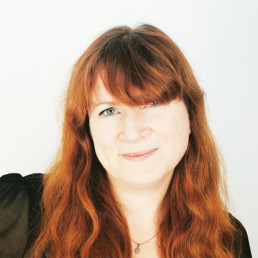
Written by Dr Harriet Marshall
Head of Educational Research at Lyfta and has been a global education advocate for over 20 years, as a teacher, researcher, consultant and education project leader.
The challenge of bringing the outside world into an indoor learning space has had a lot of attention recently as a result of ‘lockdown-learning’ requirements. However, many in the field of global learning have been actively working on this pedagogical task for decades in a variety of ways. Recently, practice has been ramped up a gear, thanks to youth mobilisation to stop climate change, David Attenborough’s chart-busting ‘Our Planet’, the UN’s 17 Sustainable Development Goals (SDGs), and a new range of digital global citizenship education opportunities.
Global citizenship education, sustainable development education or human rights education can be an empowering, enriching, and transformative educational experience. The extent to which UN states also believe this work crucial is manifested in Target 4.7 of the SDGs:
By 2030 ensure all learners acquire knowledge and skills needed to promote sustainable development, including among others through education for sustainable development and sustainable lifestyles, human rights, gender equality, promotion of a culture of peace and non-violence, global citizenship, and appreciation of cultural diversity and of culture’s contribution to sustainable development. (Source: sdgs.un.org)
The 2030 Agenda for Sustainable Development, the resolution adopting the SDGs, pledged to ‘leave no one behind’ and recognises the dignity of all and equality among all. The plan therefore rightly highlights an opportunity to consider complex global issues relating to equality, diversity and inclusion in all sorts of settings – including schools.
There are many ways in which schools are opting to bring in global learning – from school awards (such as UNICEF’s Rights Respecting Schools) to working with regional Development Education Centres to engaging in programmes like the British Council’s Connecting Classrooms. Some teachers are familiar with publications such as Oxfam’s Guides for Teachers on the ‘Sustainable Development Goals’ or ‘Global Citizenship Education’ and so use these to identify a curricular and pedagogic strategy right for the needs of their students. Research hubs such as the Development Education Research Centre (UCL London) have also now established global learning as a credible educational field by researching practice around the world and producing peer-reviewed publications such as the International Journal of Development Education and Global Learning. However, we do not yet know enough about effective global learning practice in SEND settings – but we do know that some exciting and transformative practice is taking place.
An increasingly popular methodology for supporting global learning and empathy-building combines both an ancient pedagogic technique with a modern-day one – storytelling and film making. We believe in capturing human stories through powerful short films which can then be turned into 360-degree interactive spaces for learning. Through this, students and teachers can navigate a virtual globe, explore different countries and visit various storyworlds. The films offer a unique glimpse into someone’s life and/or home and a snippet of how they see their lives and the world at a particular moment in time. No story provides a complete picture of an issue, but it helps bring things to life for students by using real-world examples and themes. Aligning this with lesson plans and resources mapped to the UN’s Sustainable Development Goals will also help build cultural awareness and global citizenship amongst students.
Let’s take a look at some of the ways in which global learning can positively impact students with special educational needs (SEN) and/or disabilities by drawing upon schools already doing this through various global learning methodologies:
- Enhancing independent learning and confidence building: Most case studies and reports emphasise how digital global learning resources can enhance independent learning and build confidence – something educators working with students with SEN have especially noticed and appreciated. One teacher from Elms Bank school has been using Lyfta’s global learning immersive digital stories with her class of students with autism. Although at first sceptical about how students might respond to the international storyworlds and subtitles, she noticed the extent to which the children engaged and empathised with the people featured in the stories and how it opened up opportunities for them. The teacher explained, “it brings the outside world into the classroom without having to go anywhere… it immerses them and engages them in a world which isn’t open to them, which they would find so difficult to be able to go and travel to places and talk to people…it allows them to do that without having to leave a space… without the pressures of unknown and the pressures of communication which might happen, they can become more independent”. Another example relates to how teachers and students are often similarly unaware of the details of global learning issues and this more level knowledge playing field can be empowering for students – offering them an opportunity to lead on topic direction or independent exploration on a range of levels.
- Supporting blended, remote and flexible learning: Global learning through immersive platforms can support a blended learning approach in a variety of settings. Digital resources that offer flexibility and choice about delivery methodology support SEN teachers in their unique settings. From a group of physically disabled students in Finland who have enjoyed the post-viewing discussions after watching real-world videos covering specific scenarios and themes to a UK teacher in an alternative provision setting who found students actually participated thanks to the option of collectively inputting ‘student’ responses to global learning questions (thus navigating obstacles to participation such as the shame felt by ‘poor spelling’).
- A useful opportunity to map, connect and combine different global learning approaches and pre-existing activities: Combining a whole school award with deeper-dive resources can provide the collective overview and the bespoke teaching methodologies required for SEN settings. For example, one teacher from the Venturer’s Academy said “I work with students who require a lot of sensory input to their learning so I’m using Lyfta to support them by creating an immersive learning experience. We are a Rights Respecting School and the platform works alongside this perfectly, enabling me to fully embed the Rights and SDGs across the school.” Other teachers have talked about how the practice of reflecting upon where global learning is already taking place in the school (such as gardening projects for sustainable and healthy lifestyles or international school-linking initiatives) can be helpful in many ways.
- Increasing engagement with physical activity (and other subjects): The UN’s SDGs combined with an immersive digital global learning resources can support PE teaching with children with SEN. For example, alongside the Youth Sport Trust and Lead Inclusion Schools across the country, we created a guide that uniquely connects PE, school sport and health and wellbeing together through immersive storyworlds aligned with the UN’s SDGs. The aim was to provide practitioners with the opportunity to engage young people in their schools that may not have previously accessed school sport, and develop confidence to access new opportunities, with the long-term outcome of increasing take up in physical activity.
- Global learning resources offering a non-sequential (and non-hierarchical) ordering of themes can fit in well with student interests and curriculum topics and priorities. Global learning is a lot about values and attitudes, but it is also about real world knowledge which has been reported as being perceived to be both relevant and interesting by students. Teachers in SEN settings have also talked about how immersive technology and storytelling can be used within a range of subjects, providing links and continuity to support student understanding.
- Global learning and digital global citizenship resources can be a way of teaching across different age-groups. Linked to point 5, opportunities for vertical teaching strategies are often useful when working with mixed-aged groups of students with different needs. The consistency of common themes can also assist in transition work.
- Building intercultural understanding and meeting those from other countries without traveling: One teacher at Rivermead School (post-16 Partnership) said how much she had enjoyed seeing her students engage with resources: “I work with students with SEN and we are a very small provision (seven students) but I have loved seeing their reactions and behaviour during our sessions where we discover new worlds. They are very respectful of other cultures and it is lovely to hear them discuss these later on that week or even a few weeks later.” Another teacher who worked with students with autism said that it was a unique opportunity for students to feel part of the world and meet people from other cultures or countries when they are highly unlikely to in their non-digital lives in the near future.
- A useful pedagogic technique for bringing in PSHE, relationships, challenging stereotypes, life-skills and self-care themes. Storytelling can help reinforce life-skills around subjects such as hygiene and health by addressing these themes but in a different context. The same can be applied to introducing more sensitive topics such as stereotyping and difference.
Prior to 2020, we could not have predicted the vital role remote learning would play in delivering the curriculum and enhancing human connection at a time of physical disconnection. While most evidence here is anecdotal and there is a need for more rigorous research on the extent to which global learning can facilitate a greater understanding of other communities and cultures, there are several educators working with children with SEN who have discovered many reasons to be optimistic. In fact, some settings may even be able to lead the way in developing innovative and useful methods, strategies and pedagogies when working with digital global learning resources.
If you would like to hear more about Lyfta or access free teacher training and trial access, sign up here.
#DiverseEd’s Top 10 Videos of 2020-21
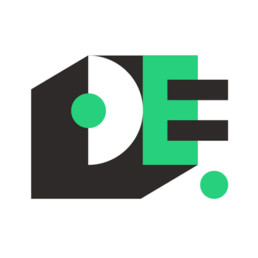
Written by DiverseEd
Diverse Educators started as a grassroots network in 2018 to create a space for a coherent and cohesive conversation about DEI. We have evolved into a training provider and event organiser for all things DEI.
We love to amplify the voices, share the journeys, and celebrate the stories of our community. Our events are inclusive and representative. Our speakers provoke reflection and stimulate discussion by:
- sharing their lived experience;
- reflecting on their classroom practice and curriculum design;
- evaluating the impact of policy changes;
- disseminating strategies for diversifying recruitment and governance.
Last year we hosted:
- 4 virtual conferences
- a #DiverseGovernance series
- a #FastForwardDiversityInclusion series
- Bennie’s book launch
- World Book Day
- A Conversation With…
You can meet our speakers here you can review our events archive here.
Deepening our thinking around DEI starts with who and what we listen to, helping us to develop our confidence and our competence, both individually and collectively. Listening to our community provokes learning through reflection and conversation to help us all understand the breadth and the depth of DEI issues we need to develop an awareness of.
Themes explored in the 2020-21 video collection include: allyship, belonging, coaching, community, culture, curriculum, governance, identity, leadership, mentoring, policy, recruitment, representation, role models, student voice, teaching and wellbeing.
Here are our Top 10 Most-Viewed #DiverseEd Videos in the 2020-21 academic year:
- #DiverseEd Live 2 – Oct ‘20
- #DiverseEd Live 1 – June ‘20
- #DiverseEdGovernance – 14th Jan ‘21
- #DiverseEd Live 3 – Jan ‘21
- #DiverseEdGovernance – 19th Nov ‘20
- Bennie’s Book Launch – 14th Nov ‘20
- #DiverseEdGovernance – 3rd Dec ‘20
- #FastForwardDiversityInclusion Episode 3 – 19th July ‘20
- #DiverseEd Live 4 – April ‘21
- #DiverseEd Live 1: Session 2 (Curriculum) – June ‘20
Thank you to everyone who has spoken at one of #DiverseEd virtual events to date – we appreciate you sharing you experience and expertise with our audience.
Our calendar for 2021-22 is updated regularly here. Please do get in touch if you would like to speak at one of our future events or indeed host us! You can complete our google form for speakers for 2021-22 events here.
#DiverseEd’s Top 10 Blogs of 2020-21

Written by DiverseEd
Diverse Educators started as a grassroots network in 2018 to create a space for a coherent and cohesive conversation about DEI. We have evolved into a training provider and event organiser for all things DEI.
We love to amplify the voices, share the journeys, and celebrate the stories of our community. Our blogs vary from sharing lived experience, to reflecting on classroom practice and curriculum design, to evaluating the impact of policy changes. We published 150 blogs from our network last academic year. You can meet our bloggers here and you can review our collection here.
Deepening our thinking around DEI starts with who and what we are reading, helping us to develop our confidence and our competence, both individually and collectively. Reading the blogs by our community provokes reflection and stimulates conversations to help us all understand the breadth and the depth of issues we need to develop an awareness of.
Themes explored in the 2020-21 blog collection include: allyship, belonging, careers, coaching, commitment, community, curriculum, culture, governance, HR, identity, ITTE, language, leadership, policy, recruitment, reflection, representation, research, safeguarding, strategy, teaching, wellbeing.
Here are our Top 10 Most-Read #DiverseEd Blogs in the 2020-21 academic year:
- How do we deal with racism in the classroom – Hannah Wilson
- How to promote an anti-racist culture in social work – Wayne Reid
- Interactive diversity calendar 2021 – Carly Hind/ Dual Frequency
- How does material deprivation intersect with ethnicity to understand the variations in the achievement among BAME students – Nicole Edwards
- Don’t tuck in your labels – Bennie Kara
- Dear Secretary of State – Hannah Wilson
- Gender is wibbly wobbly and timey wimey and gloriously so – Matthew Savage
- Engaging with diversity – giving pupils a voice – Gaurav Dubay
- Black lives matter, then now always – Wayne Reid
- Breaking the cycle anti-racist plan term 1 – Dwain Brandy
Thank you to everyone who has contributed to our #DiverseEd date and please do get in touch if you would like us to publish you. You can find out more about how to submit here.
Broaden Horizons with Technology

Written by Serdar Ferit
Filmmaker, digital experience designer, and teacher who has won numerous awards and worked in over 20 countries on film, new media and education projects. Co-CEO of Lyfta.
This article first featured in the July edition of Headteacher Update Magazine.
While great strides have been made with LGBTQ+ equality in recent years, there is still so much more to be done to improve how these topics are discussed in school. Teaching children about sex education, human relationships and gender identity is vital to creating more accepting and well rounded global citizens. Education plays a fundamental role here and this is an area about which many teachers are passionate.
As of September 2020, it is mandatory for all English schools to teach an LGBTQ-inclusive curriculum. Educating children from an early age about diversity and equipping them with the skills to better understand and celebrate this is one of the most important things we can teach in schools. It is the key to eradicating discrimination in society and fostering a future generation who are more empathetic and inclusive towards one another.
Teaching pupils, particularly younger children, about Pride and what it means to be LGBTQ+ is sometimes perceived as a thorny subject. Sex education should be treated with sensitivity in schools, to ensure that children feel safe if they wish to open up and express themselves. It’s vital to equip teachers with the resources and skills that will help them confidently teach diversity in the curriculum and usualise it as a subject for children. Sharing real-life stories from people who come from different backgrounds can be a powerful way for schools to approach this. Hearing people share stories of their own lived experience, helps to nurture empathy and understanding and can make sensitive themes such as inclusivity and sexuality easier to understand.
When these real-life, story-based lessons are presented in an immersive way, the impact is even greater, offering an incredibly powerful and engaging way to introduce children to different themes and allowing them to explore new cultures and perspectives which they otherwise might not experience. This is especially powerful when teaching an inclusive curriculum. Some pupils might have never met someone who is openly LGBTQ+, or they might have even witnessed, or been subjected to, negative stereotyping and homophobia. Sharing human stories with pupils through an interactive, 360° learning environment gives them the freedom to explore and hear first-hand from people whose lived experiences can help broaden understanding and foster inclusivity.
Immersive storytelling platforms like Lyfta allow schools to take pupils on virtual trips, for example to Curacao in the Caribbean, where they can hear from Qwensley, a young gay man living in a conservative Christian community. Children explore what it means to Qwensley to be part of the LGBTQ+ community and the challenges he faced, whilst discovering the power of resilience, empathy and acceptance. Introducing children to multiple perspectives, and demonstrating diversity will not only help to broaden pupils’ horizons and sense of cultural capital, but will also equip them with the knowledge and confidence to express their own identities and be proud of who they are. Human storytelling enables teachers to bring depth, breadth and meaning to sensitive and complex concepts for children and can create a safe space for the class to discuss and engage with the themes.
With the coronavirus pandemic limiting travel and close human interactions, speaking to children about diversity around the world is more important than ever. Technology is a wonderful tool for broadening students’ horizons, bringing human stories to life and helping to develop more confident, empathetic and globally-conscious thinkers who will go on to make a positive impact in the world.
You can find out more about Lyfta and sign up for free training and trial access here.
You Are Not Alone: Leaders for Race Equality
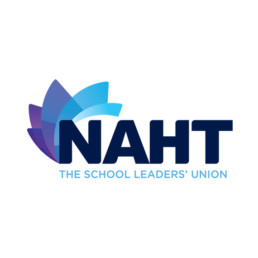
Written by NAHT
NAHT is the UK’s largest professional association for school leaders, representing more than 33,000 head teachers, executive heads, CEOs, deputy and assistant heads, vice principals and school business leaders.
At the end of June 2021, NAHT launched our ‘You Are Not Alone: Leaders for Race Equality’ book.
Originating from NAHT’s Leaders for Race Equality network, the book shares the personal experiences of 14 NAHT members from Asian, African, Caribbean and multiple backgrounds. It includes personal and challenging stories of the discrimination faced as both leaders and individuals through school, university, interviews and promotion, often having to prove themselves at every step on the way to leadership and facing both overt and covert racism from others. Common to many stories is the impact of the school environment and how vital the support and influence of role models can be.
The stories and experiences shared are powerful, challenging and at times deeply saddening. However, they are equally heartening, sharing examples of courage, determination and hope.
Mayleen Atima, a Head Teacher in Suffolk and book author
“All I ever wanted to be was a teacher” is the first line to my chapter. I wanted to start from a point of ambition. Even now that line is tinged with many memories for me as the path to teaching was not as romantic as I imagined it would be.
The below extract was the hardest part to write as I had to delve back into the emotions of that period of time.
“I realised at that point that, within that school, I had come to the end of my career progression, and I attended a deputy head teacher training course. I applied for several jobs and finally got an interview. The head teacher was shocked when he heard that I had an interview. He asked me for my personal statement so that he could write the reference. After reading the personal statement, he stated that it was full of grammatical errors and I should have let him read it before applying for the job. I was annoyed and my confidence was knocked. Deep down I knew that he did not want me to go, but still his words and actions hurt”.
I want all readers to find confidence in knowing their value and worth. Not waiting for someone to echo your value but knowing your own worth. The extract above pin-points a pivotal point for me when I realised my worth and knew it was time to move on.
I am now an established head teacher in Suffolk, running a school that has improved from ‘requires improvement’ to ‘good’. All I ever wanted to be was a teacher and I have achieved that goal.”
Ruhaina Alford-Rahim, Executive Head Teacher in Devon and book author
I had never considered racism as an issue that affected me, yet in writing my chapter, I recognised that racism my parents had suffered decades ago had shaped me to be a person afraid to expose my difference. Suppressed memories of micro-aggressions I had witnessed through 20 plus years in education surfaced: colleagues mocking children’s names; comments regarding needing to be careful when interviewing a non-white candidate; a senior leader revealing that he would like to leave London to get his children away from its diversity; a colleague saying that the Indian sweets a teaching assistant had brought in would taste like sweet wall paper paste and the aggression I received from parents when I first started teaching – at that time my surname was ‘Rahim’ and I wore a hijab.
Writing the chapter has helped me realise that by hiding my difference I am assuming everyone will react negatively and so I am doing them a disservice – not allowing the opportunity for others to learn, ask questions and develop their own understanding of cultures.
Diana Ohene-Darko, Assistant Head Teacher in Harrow and book author
It is my hope that those who read the book take the time needed to immerse themselves in our stories, to spend time with us, walking in our shoes if only for a moment. And to take-away the need to create safe spaces, open up discussion and make everyone feel that they are a person, that they belong where they are. No matter what school you are in, you belong there.
Equality is everybody’s responsibility. It requires commitment. It requires hard work. It requires personal reflection from the offset. In order for the whole of the education profession to be an ally, to become allies, you have to delve into that personal reflection, you have to delve into your own biases (and we all have them in different respects). In terms of equality being everybody’s responsibility, actually we are protecting each other’s ‘protected characteristics’, those characteristics that are protected by law- that is all of our joint responsibility.
Next Steps
NAHT hope that this book can play a part in igniting further conversation and awareness around the breadth and depth of discrimination within the sector. We know that the profession is not yet representative of the communities we serve, and that this is a particular issue at senior leadership level. NAHT are therefore proud to lend its support to amplify our Black, Asian and minority ethnic members’ authentic voices.
NAHT also recognises the need to challenge ourselves – we know that as an organisation we have really only just begun on our own journey and we remain committed to using our power to work to actively help dismantle racism and the structures that perpetuate it, in all of its forms.
The book is freely available to download at https://www.naht.org.uk/NAHT-Edge/ArtMID/694/ArticleID/1018/You-are-Not-Alone-Leaders-for-Race-Equality
If you are interested in hearing more about the book then please contact policy@naht.org.uk
The National Curriculum - What Needs to Change?
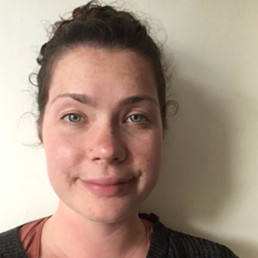
Written by Molly Burbridge
Molly is a teacher based in Greater Manchester, she founded AC in September 2020. She has a BA from Manchester University in American Studies.
Why is the national curriculum so limiting?
The national curriculum determines what is taught in our schools and colleges. It not only establishes who deserves to be celebrated in our country’s classrooms but also which students are represented. The content of our curriculum, the privileging of some forms of knowledge and aspects of lived experience over others and even pedagogical practices themselves serve to prioritise some voices and marginalise or silence others.
Even though educational establishments are required to abide by the Equality Act of 2010 our national curriculum does not reflect the nine protected characteristics equally. There is no requirement to learn about how institutionalised racism impacts our society; most authors of GCSE English texts are White heterosexual cisgender men; there is little scope for the celebration of the diverse array of cultures and identities that exist in our society. Even in PSHE, a subject that can be considered to have the most freedom to explore topics relating to the nine protected characteristics, is curtailed by DfE guidance limiting the external visitors that can support the delivery of a PSHE curriculum to disallow those, ‘promoting divisive or victim narratives that are harmful to British society’ (https://www.gov.uk/guidance/plan-your-relationships-sex-and-health-curriculum#using-external-agencies). This has been seen as an attempt to limit educators from teaching about activist groups such as Black Lives Matter and Extinction Rebellion (https://www.theguardian.com/education/2020/dec/15/education-department-to-review-schools-guidance-on-anti-capitalist-groups?__twitter_impression=true). It would be an impossible task to effectively teach about the nine protected characteristics of the Equality Act of 2010 without discussing the actions taken by marginalised groups to fight for equality however the DfE seem to be trying to prevent this.
Why does a representative curriculum matter?
Lack of representation or misrepresentation prevents society from progressing. When harmful, inaccurate or ignorant portrayals of groups of people exist in the media or cultural industries it leads to discrimination and harassment. If students don’t see themselves represented in topics they learn at school whether that be due to their race, gender identity, sexual orientation or disability then it becomes a barrier to achieving a sense of equality in schools. A lack of representation can also perpetuate existing inequalities that exist in society. Pupils who belong to groups that hold power in society are not given an opportunity to locate themselves within this position of power in society and are therefore not encouraged to consider how they benefit from it and what they can do to promote equality.
How we want to make a change!
Here at Alternative Curriculum, we want to widen the educational conversation and deepen an understanding of many subjects that are often airbrushed out of our national curriculum. We create free online resources that can be used by teachers in their classrooms, parents/carers as learning tools at home or young people as an opportunity to widen their cultural capital. Our aim is to amplify diverse voices and give young people the chance to learn about the varied histories, cultures and communities that have contributed to society. Our lessons focus on minority groups and those whose histories and cultures are not as thoroughly covered in the mainstream curriculum, with lessons on various topics within areas of history, science, media, literature, cultural studies and more. Example lessons so far include:
- ‘Pride’- KS1: https://www.alternativecurriculum.org/pride-3/
- ‘Racism, Inequality, Cultural Pride and Revolutionaries’- KS3: https://www.alternativecurriculum.org/racism-inequality-cultural-pride-revolutionaries/
- ‘The World’s Wife’- KS4: https://www.alternativecurriculum.org/the-worlds-wife/
- ‘Irish History’- KS5: https://www.alternativecurriculum.org/irish-history/
We have even started creating adult resources as it’s important that we continue to educate ourselves and continue the conversation around anti-discrimination and equality. Here are some examples of our adult resources:
- Disability Rights in the UK: https://www.alternativecurriculum.org/disability-rights-in-the-uk-2/
- Kill the Bill: https://www.alternativecurriculum.org/kill-the-bill/
As conversations around the creation of a diverse and representative curriculum continue we hope that it is prioritised in classrooms across the country. Until then we will keep creating resources that amplify and celebrate unheard voices and change the narrative or our national curriculum.
Diversification - More Than an Educational Token
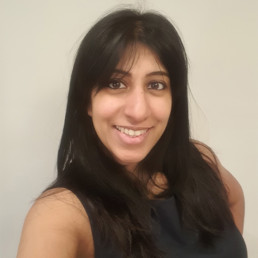
Written by Bhamika Bhudia
English teacher and lead teacher in a mixed comprehensive secondary school in North-West London. She tweets as MissMika_Eng
Diversity is a bit of a buzzword lately and a loaded one. Everywhere you look, it is in company policies, featured in plots of television shows and floating around our classrooms and curricula. However, despite its crucial need for focus and acknowledgement, the form we see of it is connoted with guilt, shaming and ultra-wokeness: the next big thing everyone needs to be talking about and be seen giving a nod to.
While terms like “diversity-hire” and “ticking boxes” are thrown around, what often goes amiss is the importance of representation and in more than just a tokenistic manner. Penguin recently published findings showing that, “Less than 1% of GCSE students in England study a book by a writer of colour, and only 7% study a book by a woman. This despite 34.4% of school age children identifying as Black, Asian and minority ethic.”
So many of our students do not see or hear themselves in the stories we tell them. So when “diversifying the curriculum” may be portrayed as the next big edu-fad, the damage of not doing this can last lifetimes. And with much of the media painting stereotypical and negative portrayals of anyone who is not white English, it is all the more damaging.
I am an Indian woman in my thirties; I spent my teens seeing most of the women from my genepool as submissive, perfectly poised opportunities for an arranged marriage plotline or a submissive daughter who just wanted some autonomy over her own life or career, should she have the audacity to want one. Who I am could not be further from this stereotype and having these very limited and hazy reflections of myself as a British-Indian woman, led me to experience conflict with a culture that I am in actual fact, incredibly proud of. But as much as this affected my youth and shaping of my identity, I can at least say that it has evolved. Archie Panjabi has gone from playing the daughter oppressed by her ethnic brand of patriarchy in the noughties to a no-nonsense, lawyer or motorcycle-riding, pathologist; Priyanka Chopra from a Miss-World-winning, exotic Bollywood beauty to a conflicted, sexually-empowered, complicated FBI agent; and of course, we have Malala and everything that she is and has done.
While I’m not for a second saying all of the issues with the representation of the Asian females have been fixed, I am acknowledging that progress has been made as it has with many other minorities and women in general. However, this is not the case across the board.
A classic example is the South-Asian male. Everywhere we see him, the Asian man is an awkward, socially inept, sexually-repressed individual whose role is no more than to drive a taxi, serve behind a shop counter or be the butt of jokes at a “funny accent” or his inability to communicate with women! The criminalisation of the black man still stands prominent over any suave and sophisticated depictions we have of him – and please can we take a real look at the dangerous and discriminatory portrayal of muslims on our silver screens?!
These one-dimensional and offensive reflections of the very students we teach will take heed on how they see themselves. They are essentially telling whole demographics that they are sexually undesirable, expected to show no confidence and be laughed at; or mistrusted, feared and hated. And they will all lead to one of three things: abandonment or dilution of their own culture; appropriation of another culture or the complete marginalization of groups of people from the British values we are told to uphold professionally, as part of our teacher standards!
How we see ourselves in the world around us is important so while western society and the wider media may be failing, we as teachers have the opportunities to tell our kids that they are not invisible, they are real and they are important. So the next time you feel the term “diversification of the curriculum” is being treated as the next temporary fixture as so many things in education are, think about the stories that may be told about the kids in your classroom and the power they can have. We have the opportunity to change the narrative and give our kids a voice that truly resonates with them – an opportunity that should not be missed!
Reflections on the Edurio EDI Summit
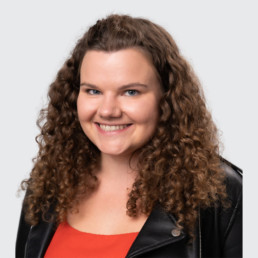
Written by Iona Jackson
Iona leads on turning Edurio’s national datasets into useful and impactful insights for trust and school leaders. Iona has worked on national reports focused on topics such as equality, diversity and inclusion, staff retention and pupil experience and wellbeing. She works closely with education leaders and industry experts to understand what the current position means for the sector, and where to go from here.
On June 21st, my colleagues and I hosted the Edurio EDI Summit, a day dedicated to promoting equality, diversity and inclusion within schools. Throughout the day we had guest speakers sharing their experiences in school as people with a range of protected characteristics, ran masterclass sessions with experts in equality, diversity and inclusion, and launched the first report from Edurio’s Equality, Diversity and Inclusion Review.
Among our guest speakers was Amy Ferguson, a female, lesbian, Black school leader, who explained her experiences at the intersection of multiple protected characteristics. We also heard from Abed Ahmed, a Muslim teacher with a stutter. We learned from Abed about the challenges of interviews when fluent speech is a challenge, and how the “usual” model of interviewing could be limiting the talent pool by assessing people on attributes that don’t dictate how well a person is able to teach young people.
The masterclass sessions covered topics from diversity to religion. Mandy Coalter encouraged attendees to understand the context using both individual stories and data when building action plans. We heard from David Hermitt about the changing role religion plays in the lives of White British/Irish children, and how that compares to their BAME peers. In another session, Jerrel Jackson talked about problems with labels, both the ones assigned to us by others and the ones we assign ourselves. We wrapped up the day with a close look at intersectionality, with Hannah Wilson (Diverse Educators) and Angie Browne. The session shone a light on the challenges that come from thinking about people based on one characteristic they may have, as humans are made up of a number of characteristics and experiences.
The event also featured the launch of our report, Equality, Diversity and Inclusion Among School Staff. It’s the first of many reports from our EDI Review, the largest dataset on EDI issues within English schools. 16,500 school staff took part from 380 schools in England, discussing their experiences relating to recruitment, on-the-job issues of equality, diversity and inclusion, and opportunities to advance within their school or trust. We found that, overall, staff felt that their workplace was committed to promoting equality, diversity and inclusion. Four in Five staff said they felt their workplace was ‘quite’ or ‘very committed’. However, there were material differences among how staff with certain protected characteristics experienced their time in schools.
The first report offers an overview of some key learnings across the Equality, Diversity and Inclusion Review. But it is just the start – in the coming weeks and months we’ll be sharing deep dives into particular protected characteristic groups, and looking into particular areas of the school experience in more detail. As our data set grows, our representation of smaller or more marginalised groups will continue to grow, and we will be able to provide a voice to people who have struggled to have their views heard. I’m excited about what is to come as we continue on this long journey towards creating equal, diverse, and inclusive workplaces in education.
—
Edurio is a survey platform for schools to quickly and easy gather feedback from staff, parents and pupils. Our EDI Review is one of a number of surveys created by Edurio in partnership with education researchers and practitioners. To find out more, or book a consultation, head to home.edurio.com

